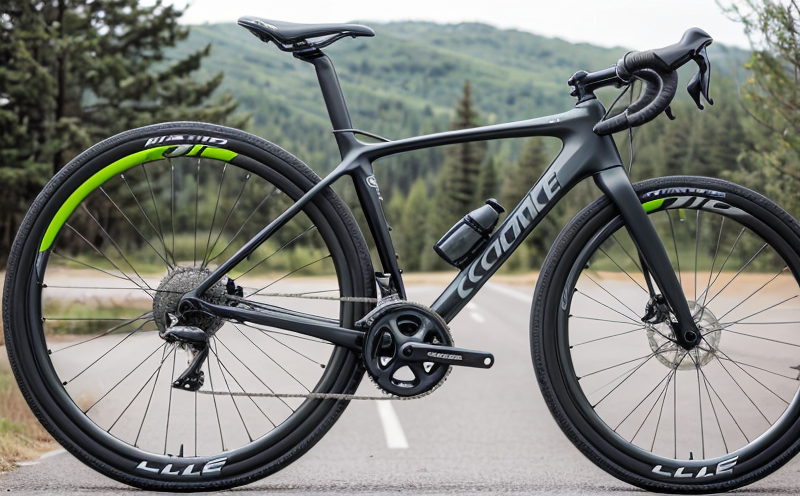Cycle Life & Durability Testing
When it comes to evaluating the performance and longevity of batteries, cycle life and durability testing stands out as a critical process. This form of testing is essential for ensuring that battery products meet stringent quality standards, comply with regulatory requirements, and provide reliable service over extended periods under real-world conditions.
The primary goal of cycle life and durability tests is to assess how many charge-discharge cycles a battery can undergo before its performance degrades significantly. This type of testing helps manufacturers identify the optimal operating parameters for their products, optimize design specifications, and enhance overall product reliability. By understanding the maximum number of cycles a battery can withstand, companies can ensure that their products meet customer expectations and industry standards.
In addition to cycle life assessment, durability tests focus on evaluating how various environmental factors—such as temperature, humidity, and mechanical stress—affect battery performance over time. These environmental stresses are designed to simulate the conditions that batteries will encounter during use, thereby providing a more realistic picture of their expected lifespan in actual applications.
ISO/IEC 16234-1:2015 specifies guidelines for testing lithium-ion cells and batteries at elevated temperatures and states that cycle life tests should be conducted under defined conditions to ensure consistent results. Similarly, ASTM G88 covers the practice of using salt spray exposure to evaluate corrosion resistance in metals; although primarily focused on metal surfaces, this standard can provide insights into how environmental factors impact battery integrity.
At our laboratory, we employ advanced equipment and methodologies to conduct comprehensive cycle life and durability tests according to industry best practices. Our testing facilities are equipped with state-of-the-art instruments capable of simulating a wide range of operating conditions that may affect batteries during their lifecycle. From high-temperature environments meant to mimic tropical climates to cold chambers designed to replicate polar regions, we can tailor our tests to meet specific client needs.
Our team of experienced professionals uses rigorous protocols when preparing specimens for testing. This includes selecting appropriate types and sizes of batteries based on intended end-use applications, charging them according to manufacturer specifications, and ensuring all components are in optimal condition prior to initiating the test sequence.
The results from these tests play a crucial role in determining whether new product designs or existing models comply with relevant quality standards. Compliance officers rely heavily on this data when making decisions about releasing products into marketplaces where strict regulations apply. R&D engineers also benefit greatly by gaining valuable insights that help improve future generations of batteries.
By investing time and resources into thorough cycle life and durability testing, manufacturers can build trust with consumers who demand reliable performance from their electronics. Moreover, such investments contribute positively to corporate social responsibility initiatives aimed at reducing waste associated with premature battery failures or replacements.
Applied Standards
- ISO/IEC 16234-1:2015: Guidelines for testing lithium-ion cells and batteries at elevated temperatures.
- ASTM G88: Practice for Auger Emission Spectroscopy (AES) Analysis of Corrosion Products from Accelerated Atmospheric Exposure.
Beyond these internationally recognized standards, our laboratory adheres to other relevant guidelines set forth by regulatory bodies like UL and IEC. We regularly review updates to ensure that all tests conducted meet current requirements without compromising accuracy or reliability.
Quality and Reliability Assurance
Our commitment to delivering high-quality results extends beyond mere compliance with established standards; it includes continuous improvement efforts aimed at enhancing both internal processes and external offerings. To achieve this, we follow strict quality assurance procedures throughout every step of the testing process.
- Specimen Preparation: Each battery undergoes meticulous preparation before undergoing any form of cycle life or durability testing. This involves cleaning electrodes, calibrating measuring devices, ensuring consistent initial charge levels, and maintaining stable environmental conditions.
- Data Collection: Throughout the test cycles, we meticulously record voltage changes, internal resistance fluctuations, capacity retention rates, and other relevant parameters that contribute to an overall assessment of battery health. All data points are cross-checked against predefined acceptance criteria established by industry norms.
- Analytical Methods: Our laboratory employs a variety of analytical techniques including electrochemical impedance spectroscopy (EIS), cyclic voltammetry (CV), and scanning electron microscopy (SEM) to provide detailed insights into the state-of-health of tested batteries. These methods allow us to pinpoint specific areas requiring attention or improvement.
- Reporting: Upon completion of all tests, our experienced technical writers prepare comprehensive reports summarizing findings and recommendations for future improvements. These documents are tailored specifically towards end-users such as quality managers, compliance officers, R&D engineers, and procurement teams.
We believe that transparent communication between clients and our laboratory fosters mutual understanding and trust. Therefore, we strive to present complex technical information in easily digestible formats while maintaining the highest levels of accuracy and objectivity.
Use Cases and Application Examples
Cycle life and durability testing finds application across diverse industries where reliable energy storage solutions are paramount. Some key areas include:
- Solar Power Systems: Ensuring that solar panels paired with batteries can operate efficiently over extended periods without degradation.
- Electric Vehicles (EVs): Validating the performance of EV batteries across various driving conditions and climate zones to ensure safe and consistent energy delivery.
- Portable Electronics: Evaluating the longevity of mobile phone, tablet, and laptop batteries under regular usage scenarios to extend product lifecycles.
- Telecommunications Networks: Testing backup power supplies used in base stations to guarantee uninterrupted service during power outages.
In addition to these commercial applications, academic institutions often partner with us to conduct research projects focused on developing next-generation batteries. For instance, we have collaborated with universities exploring the potential of solid-state electrolytes and novel cathode materials for improved safety and efficiency.
Our expertise in cycle life and durability testing allows us to contribute meaningfully to advancements within these fields by providing robust data that supports informed decision-making processes.





